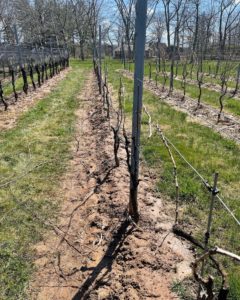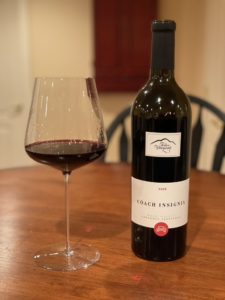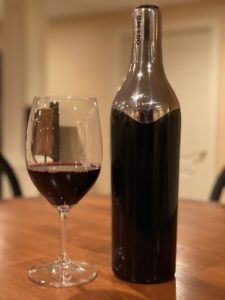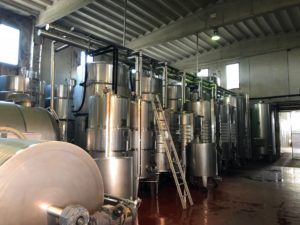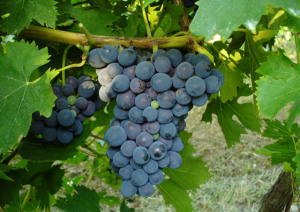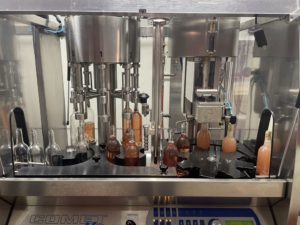At the onset of fermentation, yeast cells will struggle to survive due to the very acidic nature of grape juice. In the vineyard, both yeast and bacteria live on the grape skins. However, during fermentation, the yeast encounters the acidic juice contained within the grape berries as they begin to break down and will struggle to remain viable. Further complicating matters, the desired yeast strain for the winemaker will be in competition with other wild yeast organisms in a battle to determine which yeast wins, thus building the necessary biomass to dominate the fermentation process. In fact, in winemaking, only one type of yeast will win. The winemaker needs to take the necessary steps to help their desired yeast prevail in this competition. Therefore, the winemaker’s decisions at the start of the crush are critical in establishing a perfectly healthy environment, which includes inoculating the must with the desired yeast strain and required nutrients, thus swinging the balance of competition in favor of the winemaker’s yeast of choice.
Yeast that is used in winemaking typically starts in a dry, dormant form, commonly referred to as being “in stasis”, and needs to be “woken up” to become active once again. Once the yeast is added to the must, which contains sugar and oxygen in both solution as well as inside the grapes themselves, the yeast will be activated. A proper pH level, ranging anywhere between 3.2 to 3.8, needs to be established for the yeast to survive and healthy fermentation to occur. However, at this early stage, the exterior membranes of the yeast cells are impermeable to nearly everything that is in the must. Oxygen molecules, however, are small enough to be assimilated, or absorbed, into the yeast cells immediately through their exterior walls. Once inside the yeast cell, oxygen will aid in the production of key amino acids and sterols, 2 critical compounds necessary for fermentation to occur. However, before fermentation begins, yeast will focus its energy on rapidly dividing, and multiplying in number by continuing to pull in available oxygen. At some point, all available oxygen has been assimilated into what has now become a significant yeast population, establishing the critical biomass to dominate and carry out the fermentation. While this population explosion activity isn’t visibly apparent, the yeast population literally grows in number from thousands of organisms to millions of organisms in a matter of 10-20 minutes.
Once the grapes are sorted and placed inside the fermentation container, additions are introduced into the must to create the ideal, healthy fermentation environment. These additions provide the winemaker’s yeast of choice the best possible chance to thrive and ferment the sugars in the grapes. A healthy environment includes key amounts of specific vitamins, minerals, and Yeast Assimilable Nitrogen, or YAN. While these nutrients exist naturally (i.e., organic) and are biologically available to the grapes in the vineyard, the winemaker often chooses to inoculate, or add, additional yeast and nutrients to the freshly picked and sorted grapes to ensure a healthy environment for the desired yeast strain to rapidly divide and propagate. At this point, sterols play a critical role in the fermentation process as they essentially help rebuild the exterior cell walls of the yeast, significantly increasing the permeability of each yeast cell, which allows for the absorption of both nitrogen and sugar molecules. As the yeast cell walls are rebuilt and expanded, they begin to take in the sugar molecules present in the grapes. Both fructose and glucose sugar molecules exist in grapes and are one of the key elements required for fermentation. It is the amino acids inside the yeast cells that help to break down the sugar molecules.
During the first week of fermentation, yeast starts to absorb and break down the sugar inside the grapes into a solution. However, upon tasting the fermenting juice at this early stage, it will have a very austere, sharp “fuel-like” flavor due to the high acidity of the solution. It will also lack any complex flavors as well. Glycosides, which are carbohydrates (i.e., sugar) that consist of 2 sugar molecules bound with a flavor molecule, exist in the grape skins and juice. All fruits and vegetables have glycosides. However, at this early stage of fermentation, there is not much flavor to the fermenting juice as the flavor molecules are still tightly bound with the sugar molecules. This bond between the sugar and flavor molecules needs to be broken to release the flavor molecules into solution. How does this happen? Enzymes and acids in the grapes act to break these bonds, releasing the sugar and flavor molecules into solution. After approximately 10-14 days of fermentation, the juice will begin to have a softer mouthfeel with more flavors that weren’t initially present in the first week, including some green flavor notes and more complex fruit flavors. This is the result of the glycoside bonds being broken by the enzymes and acids present in the must. As previously mentioned, fermentation only happens with a healthy environment established for the yeast, which requires time to develop. The must and juice are naturally very acidic, in which yeast and bacteria will struggle to survive. The winemaker needs help the preferred yeast not only survive but thrive so that no other yeast or bacteria takes control or spoils the fermentation. Therefore, the winemaker will choose to inoculate the must with the desired yeast and key nutrients, namely: vitamins, minerals, and YAN. Like a perfectly synchronized orchestra, fermentation kinetics ensures that everything is happening at the right time via the kinetic activity within the must to carry out fermentation. In other words, all the right things come into play at just the right time, interacting with the right compound molecules to give the yeast the best chances for fermenting the must. Given the right amount of nutrients, acidity and pH levels, the winemaker can create a wine with much more complex flavors. Not leaving things to chance, this affords winemakers the ability to produce world class wines.
